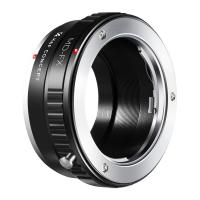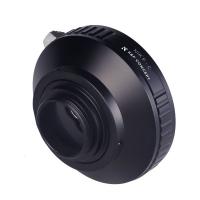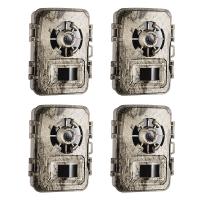What Does Anaphase Look Like Under A Microscope ?
Under a microscope, anaphase appears as a distinct stage of cell division where the sister chromatids separate and move towards opposite poles of the cell. The chromosomes become highly condensed and can be observed as distinct, elongated structures. The microtubules of the mitotic spindle, which are responsible for pulling the chromatids apart, are visible as thin fibers connecting the chromosomes to the poles of the cell. The movement of the chromatids towards the poles can be observed as they are pulled along the microtubules. Overall, anaphase is characterized by the clear separation of the duplicated chromosomes and the beginning of their migration towards opposite ends of the cell.
1、 Chromosome separation in anaphase: Microscopic visualization and mechanisms.
Anaphase is a crucial stage of cell division, specifically in mitosis and meiosis, where the separation of chromosomes occurs. Under a microscope, anaphase appears as a dynamic and highly coordinated process involving the movement of chromosomes towards opposite poles of the cell.
During anaphase, the sister chromatids, which are the replicated copies of each chromosome, are pulled apart by spindle fibers. These spindle fibers attach to the centromeres of the chromosomes and exert force to separate them. As the spindle fibers contract, the sister chromatids move towards the poles of the cell, forming two distinct groups of chromosomes.
Under a microscope, anaphase can be observed as a clear division between the two groups of chromosomes, with each group moving towards opposite ends of the cell. The chromosomes appear elongated and stretched out as they are pulled apart. The movement of the chromosomes is facilitated by the spindle fibers, which can be visualized as thin, thread-like structures connecting the chromosomes to the poles of the cell.
Recent advancements in microscopy techniques have allowed for more detailed visualization of anaphase. High-resolution microscopy, such as super-resolution microscopy, has provided insights into the molecular mechanisms underlying chromosome separation. It has revealed the intricate network of proteins involved in spindle formation and chromosome movement, shedding light on the precise coordination required for successful anaphase.
Furthermore, live-cell imaging techniques have enabled the observation of anaphase in real-time, providing a dynamic view of the process. This has allowed researchers to study the timing and duration of anaphase, as well as the potential variations that may occur in different cell types or under specific conditions.
In conclusion, anaphase can be visualized under a microscope as the separation of chromosomes towards opposite poles of the cell. Recent advancements in microscopy techniques have enhanced our understanding of the molecular mechanisms and dynamics of anaphase, providing valuable insights into the process of chromosome segregation during cell division.

2、 Anaphase spindle dynamics: Insights from microscopy techniques.
Anaphase is a critical stage of cell division where the duplicated chromosomes are separated and pulled towards opposite ends of the cell. Under a microscope, anaphase appears as a dynamic and highly orchestrated process involving the movement of chromosomes and the formation of a structure called the spindle.
During anaphase, the spindle fibers, composed of microtubules, elongate and attach to the chromosomes at their centromeres. These microtubules then exert forces on the chromosomes, causing them to move towards the poles of the cell. The chromosomes appear as elongated structures, with the two sister chromatids being pulled apart.
Microscopy techniques have provided valuable insights into the dynamics of anaphase spindle formation and chromosome movement. Live-cell imaging using fluorescently labeled proteins has allowed researchers to visualize the behavior of individual molecules and structures in real-time. This has revealed the precise timing and coordination of events during anaphase.
Recent studies have focused on understanding the molecular mechanisms that regulate spindle dynamics during anaphase. For example, it has been discovered that motor proteins, such as kinesins and dyneins, play crucial roles in chromosome movement by exerting forces on the microtubules. Additionally, the role of microtubule-associated proteins in stabilizing and organizing the spindle has been investigated.
Furthermore, advanced microscopy techniques, such as super-resolution microscopy, have enabled researchers to study anaphase at higher resolution, revealing finer details of the spindle structure and the interactions between microtubules and chromosomes.
In conclusion, anaphase under a microscope appears as a dynamic process characterized by the movement of elongated chromosomes towards the poles of the cell. Microscopy techniques have provided valuable insights into the molecular mechanisms and dynamics of anaphase spindle formation, shedding light on the intricate processes that ensure accurate chromosome segregation during cell division.

3、 Kinetochore movements during anaphase: Microscopic observations and implications.
Anaphase is a crucial stage of cell division, specifically in mitosis and meiosis, where the replicated chromosomes are separated and pulled towards opposite ends of the cell. Under a microscope, anaphase appears as a dynamic and highly coordinated process involving distinct movements of the chromosomes and the microtubules.
During anaphase, the sister chromatids, which are held together by protein complexes called cohesins, start to separate. The microtubules of the mitotic spindle, known as kinetochore microtubules, attach to the kinetochores located at the centromeres of the sister chromatids. As the microtubules shorten, the kinetochores move towards the poles of the cell, dragging the separated chromatids along.
Microscopic observations have revealed that the movement of kinetochores during anaphase is not uniform. Instead, it occurs in a series of jerky motions, known as "kinetochore oscillations." These oscillations are thought to be a result of the dynamic instability of microtubules, where they undergo cycles of growth and shrinkage. The kinetochores switch between being attached to and detached from the microtubules, leading to the jerky movements.
Recent studies have also shed light on the molecular mechanisms underlying kinetochore movements during anaphase. It has been discovered that motor proteins, such as dynein and kinesin, play a crucial role in the process. Dynein, located at the kinetochore, moves towards the minus end of the microtubules, pulling the kinetochore towards the pole. Kinesin, on the other hand, moves towards the plus end, contributing to the overall movement of the kinetochore.
In conclusion, anaphase under a microscope appears as a dynamic process with distinct movements of the chromosomes and microtubules. Kinetochore oscillations, driven by the dynamic instability of microtubules and the action of motor proteins, contribute to the separation of sister chromatids and their movement towards opposite poles of the cell. These microscopic observations and the latest understanding of the molecular mechanisms involved provide valuable insights into the intricate process of cell division.

4、 Anaphase A and B: Microscopic evidence for distinct spindle elongation mechanisms.
Anaphase is a crucial stage of cell division, specifically in mitosis and meiosis, where the replicated chromosomes are separated and pulled towards opposite ends of the cell. Under a microscope, anaphase appears as a dynamic and highly organized process.
During anaphase, the microtubules of the mitotic spindle, known as kinetochore microtubules, attach to the centromeres of the sister chromatids. These microtubules then shorten, causing the sister chromatids to separate and move towards opposite poles of the cell. This movement is facilitated by the action of motor proteins, such as dynein and kinesin, which exert forces on the microtubules.
Under a microscope, anaphase can be observed as two distinct groups of chromosomes moving away from each other towards the poles of the cell. The chromosomes appear elongated and stretched out as they are pulled by the microtubules. The microtubules themselves can be visualized as thin, thread-like structures extending from the centrosomes at the poles of the cell to the kinetochores of the chromosomes.
Recent studies have provided further insights into the mechanisms of spindle elongation during anaphase. Anaphase A and B have been proposed as two distinct modes of spindle elongation. Anaphase A involves the shortening of kinetochore microtubules, while anaphase B involves the sliding apart of the polar microtubules at the cell poles. This distinction is supported by the observation that different motor proteins are involved in each process.
In conclusion, anaphase can be visualized under a microscope as the separation of chromosomes towards opposite poles of the cell. The elongation of the spindle and movement of the chromosomes are facilitated by the action of microtubules and motor proteins. The recent understanding of anaphase A and B provides further insights into the distinct mechanisms involved in spindle elongation during this critical stage of cell division.






























There are no comments for this blog.